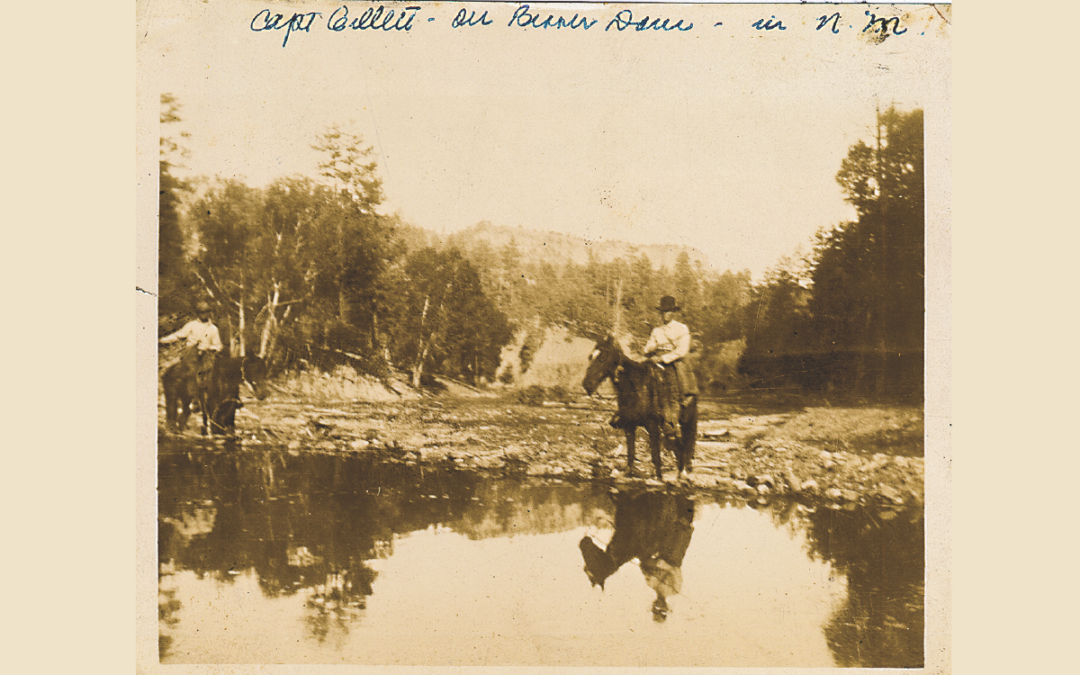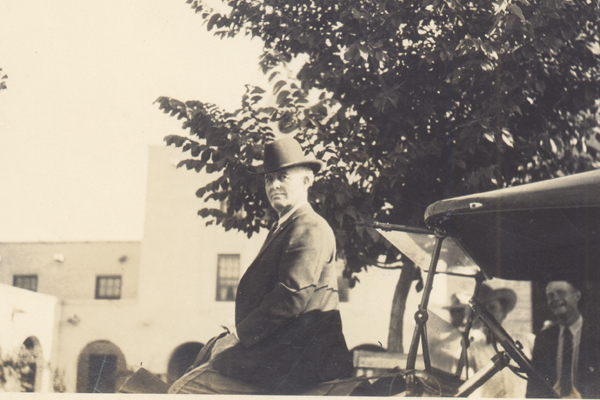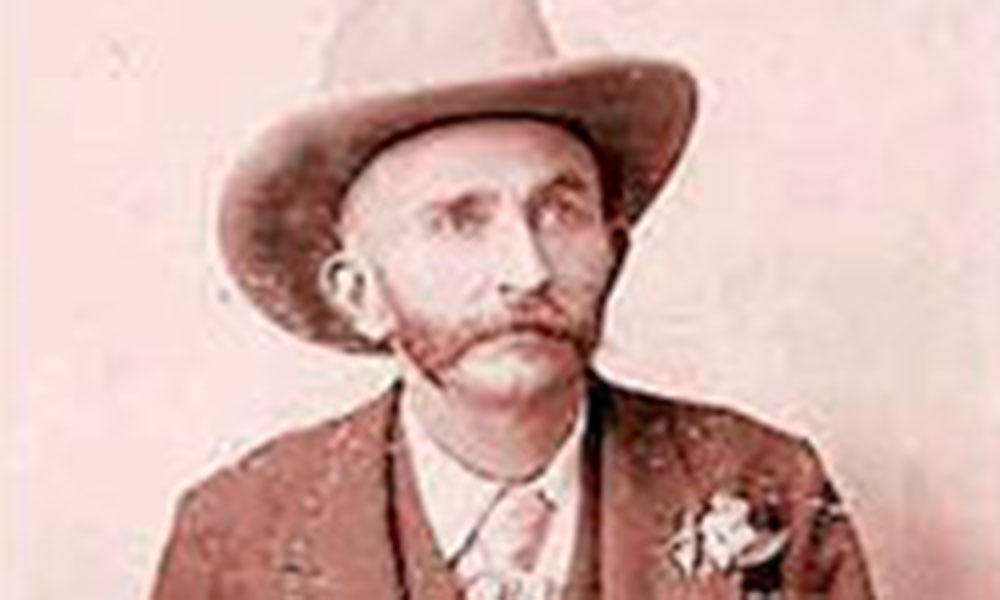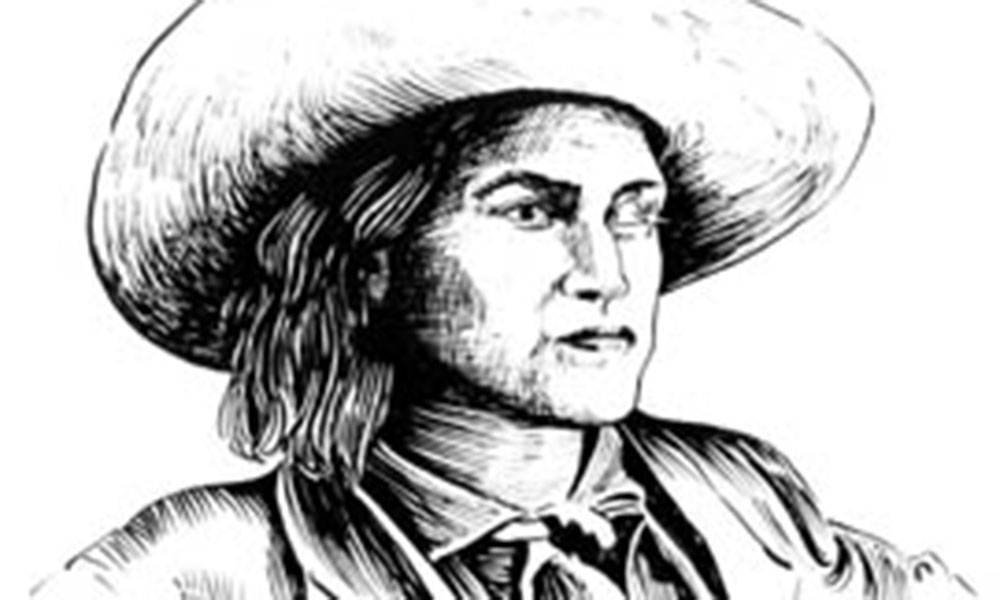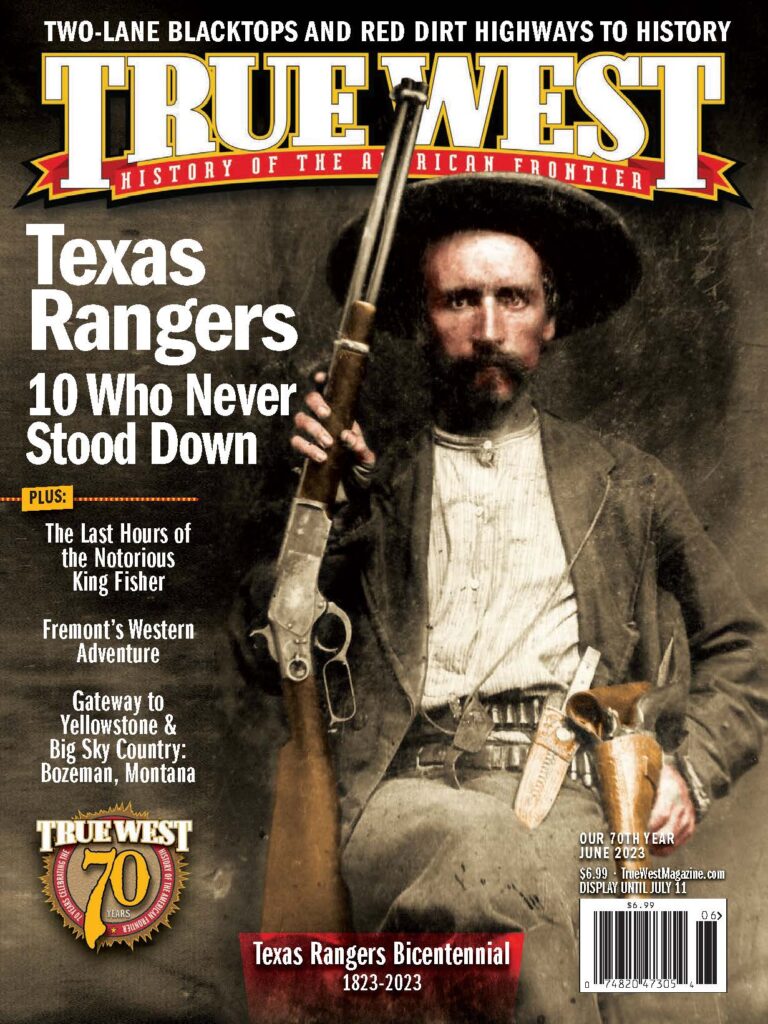Texas Ranger Jim Gillett writes himself into fame.
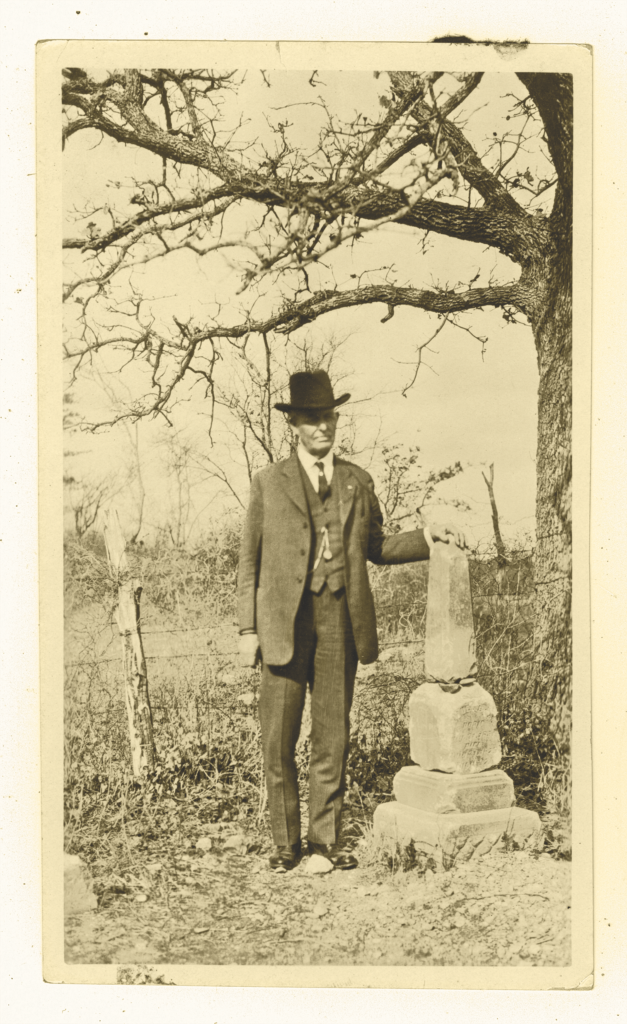
Jim Gillett was just 20 years old when he decided to join the Texas Rangers in 1875.
But young didn’t mean inexperienced—Gillett was a native of the state and had spent years on the frontier, punching cattle, bustin’ broncs and battling Indians. But he wanted more; he wanted to be a Ranger.
Between his 1875 enlistment and resignation in late 1881, Gillett had a distinguished career. He helped capture outlaw Sam Bass just outside Round Rock in 1878. He was part of the effort to end some of the notorious Texas feuds, from the Mason County War to the Horrell-Higgins dust-up to the El Paso Salt War. And he participated in some of the last Indian fights in Texas history. His service was acknowledged by his superiors, who promoted Gillett to sergeant by the end of his Ranger tenure.
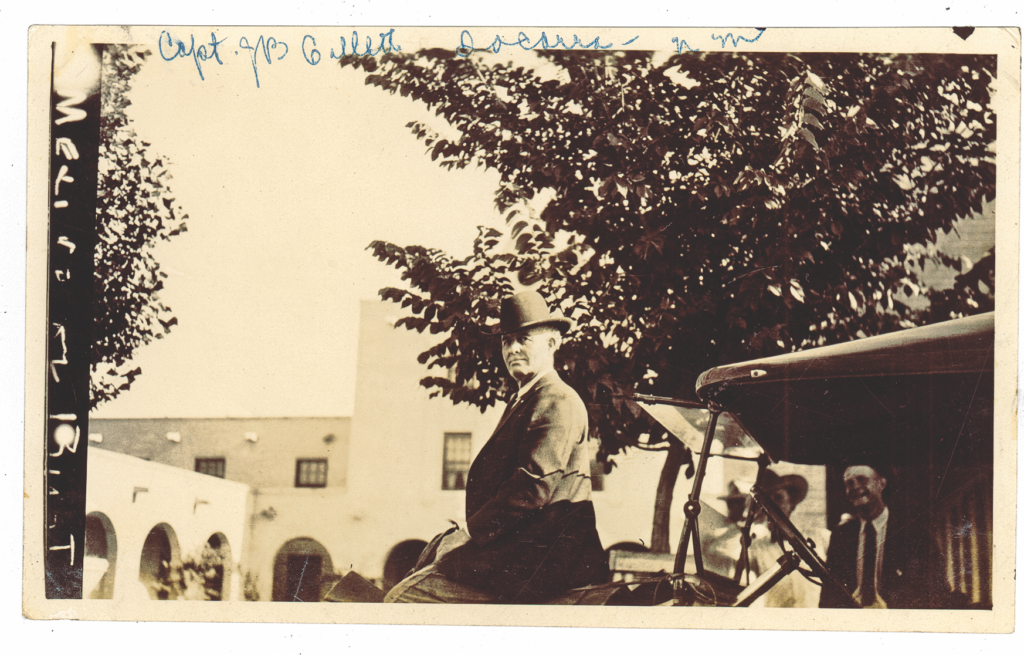
The ex-Ranger appears to be sitting on the hood of a car in the downtown area in Socorro, New Mexico. The two men in the right background are unidentified. It’s not clear what Gillett was doing in Socorro. After his Ranger run, he served as deputy and then marshal of El Paso. In 1885, he moved into the cattle business near Marfa, where he enjoyed great success over the next several decades. By the mid-1920s, when these photos were taken, Gillett was retired and living in Marfa. He died of heart failure in Temple on June 11, 1937, and he is buried in the Marfa cemetery.
But Gillett’s life proved that the pen was mightier than the sword (or Colt). He gained his greatest recognition from writing a book about his experiences, Six Years with the Texas Rangers, a rare first-person account of the law enforcement agency in the 19th century. He self-published a small number of copies in 1921. By 1925—the 50th anniversary of his becoming a Ranger—the Yale University Press had picked up the book and given it a greater distribution, furnishing Gillett a prominence beyond what he had during his law enforcement days.
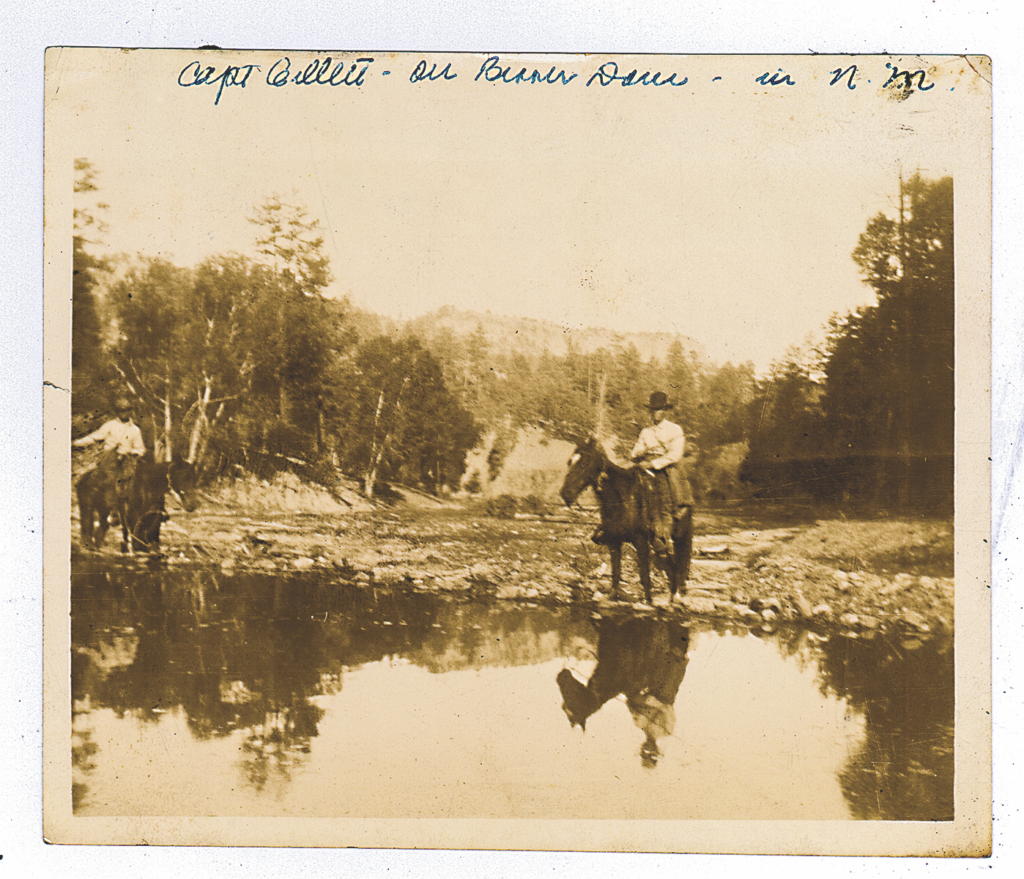
The photo’s caption states “Capt. Gillett—on Beaver Dam—in N.M.” It’s not clear just where in New Mexico this shot was taken. The writer was sort of right and wrong: Gillett was never a Ranger captain during his service, reaching the rank of sergeant before he resigned in 1881. Texas Gov. Ross Sterling, however, did name him “Captain of All Rangers for Life” in the early 1930s, the only time such an honor was given.
These never-before-published photos, which likely came from a Gillett family photo album, were taken around that same year. They provide a portrait of a man still active and vital at the age of 69 (and who still had 12 years of life ahead of him). The pictures also confirm that Jim Gillett was comfortable with revisiting his past.
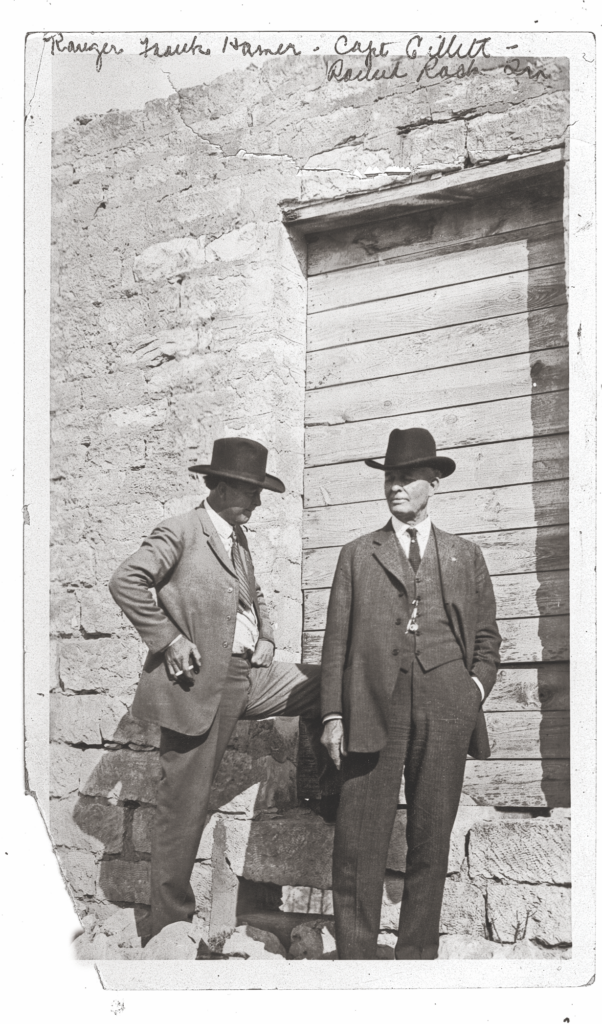
This photo of Frank Hamer (far left) and James B. Gillett was taken in Round Rock, probably around the same time as the picture at Bass’ grave (note that Gillett is wearing the exact same outfit). Hamer was still nine years away from his greatest fame—the killing of Bonnie and Clyde in Louisiana in 1934. The book I’m Frank Hamer: The Life of a Texas Peace Officer features a slightly different shot taken at the same time—Gillett and Hamer switch positions.

